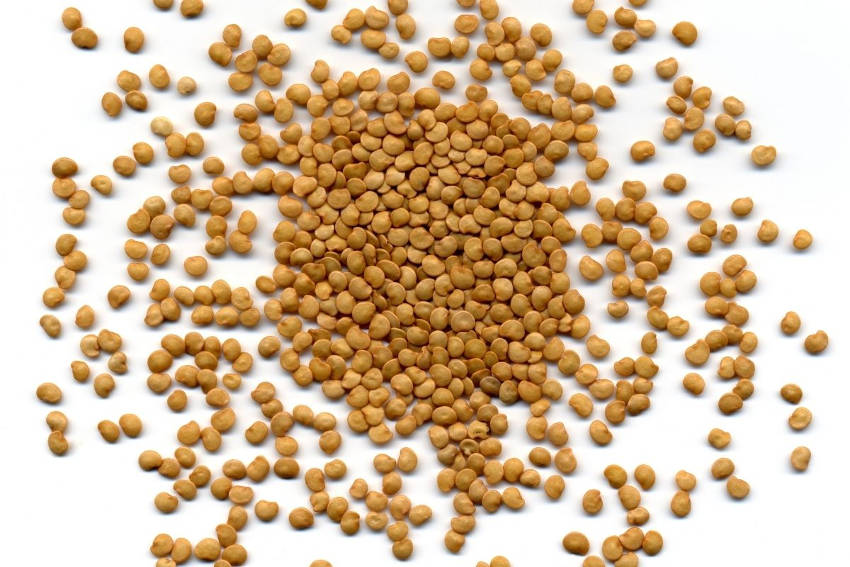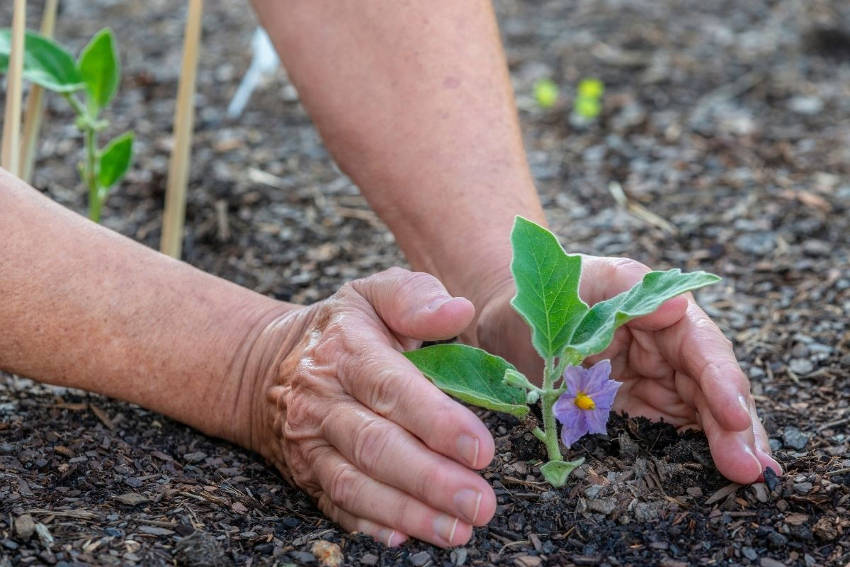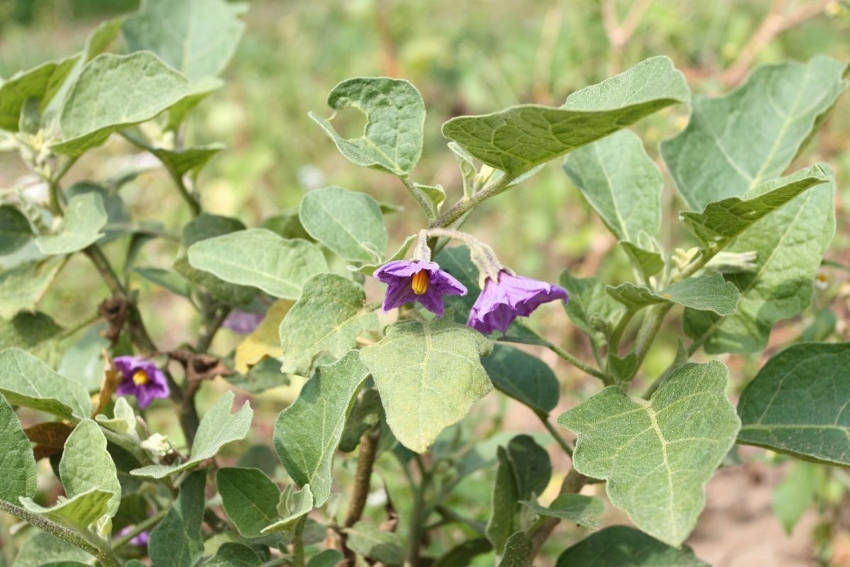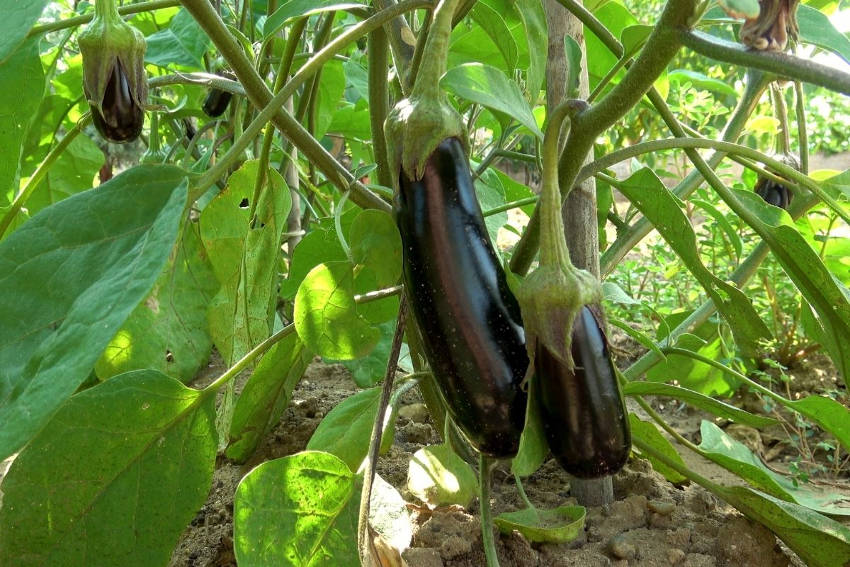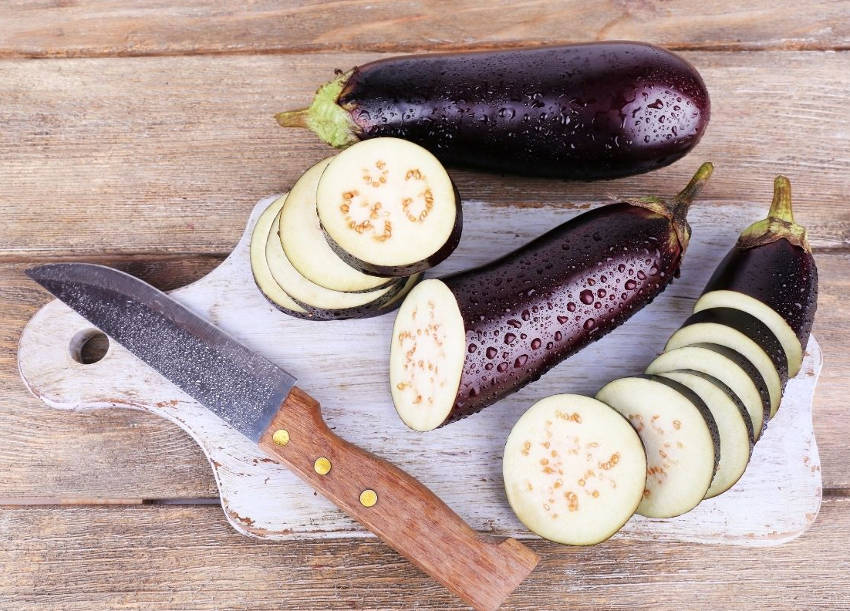Most veggie gardeners find space to grow one at least one of the staples of potatoes, tomatoes, and peppers. All of these plants are members of the solanaceae family, but one of their prominent siblings is much less widely grown at home.
This is a shame, as given the right conditions Solanum melongena can produce a huge crop of delicious fruits, as well as adding plenty of visual interest to a vegetable patch.
The species in question is more commonly known as eggplant, aubergine, brinjal, or melanzana, along with dozens of other names depending on which part of the world it's enjoyed. Here's what you need to know to grow it successfully.
Eggplant's Appearance in the Garden
The eggplant is an upright, bushy plant which grows to around a metre in height and spread. Several slightly prickly branches split off from the central stem, each bearing broad, lightly fuzzy leaves with scalloped edges. In time, whitish-purple flowers with yellow stamens appear, followed by the eggplant fruits themselves.
The most common eggplant varieties produce the large, long, oval fruits which are familiar from the supermarket shelves, with a colour ranging from reddish purple to a deep blue-black.
However, there are many other varieties available with fruits of varying shapes and sizes. Lebanese eggplant types produce longer, thinner fruits, although there tend to be many more of them per plant.
Thai varieties can produce bunches of tiny fruits looking very similar to grapes, while many other eggplants produce mature fruits no larger than golf balls.
Eggplant colours can vary just as widely. Some Italian varieties can streak the traditional purple skins with rough white stripes, while still others bear fruits which are bright violet, eggshell, or even orange in colour.
Eggplant in the Kitchen
If you've only experienced shop-bought eggplant and found it mealy and tasteless, you may be wondering if this veggie is worth its space in your patch. As you might guess, a good homegrown eggplant is a different matter entirely from a typical supermarket specimen. The texture is creamy rather than woolly, and the subtle flavour is nutty and smooth rather than bitter or watery.
Traditionally, any bitterness was dealt with by salting the fruit before cooking. To do this, slice the eggplant and sprinkle the flesh with a little salt. Leave the slices in a colander for up to half an hour, then wipe them dry and use in your recipe. While most modern varieties have had the extremes of bitterness bred out of them, salting can still be used to reduce the water content and firm up the texture.
Larger eggplants find a natural home thickly sliced, oiled, and grilled, particularly on a BBQ. Smaller ones are great in all manner of Asian curries and stir fries, and are also a mainstay of European vegetable ensembles including caponata and ratatouille.
And if you find yourself with overgrown fruits which are heading towards mealiness, they can be roasted and used as the basis of traditional Middle Eastern dips, or to thicken soups and stews.
However, it should be pointed out that as a member of the nightshade family, all parts of the eggplant except the fruit are poisonous to a greater or lesser extent.
Eggplant Nutritional Benefits
Eggplant is an excellent source of vitamin C, with smaller amounts of vitamins K and B6. It's also a great source of various minerals, including potassium, iron, niacin, and folate.
The high fibre content of the fruit also makes it good for digestion, explaining its traditional appearance in side dishes and relishes in many cuisines.
How to Grow Eggplant at Home
If there's one thing you need to know about growing eggplant, it's that a lengthy period of warmth is essential to success. As a semi-tropical native it needs consistent temperatures of 20C or higher to thrive, and trying to grow it in cooler conditions is pretty much doomed to failure.
In areas with shorter growing seasons, starting the seeds off indoors is almost essential. However, be sure to sow them in root trainers, biodegradable pots or similar, to reduce the shock of transplantation.
But whether you sow the seeds under cover or directly in the veggie bed, eggplants should find their final home in full sun, in well-draining, richly fertile soil, and with a spacing of at least 45cm in each direction.
Fortifying the soil with well-rotted compost gives the plants a good start, and they'll appreciate a feed with a potassium-rich fertiliser every fortnight onward from when the first flowers appear.
Watering is important, with the plants preferring a regular, deep soaking that drains quickly, rather than standing in waterlogged soil. Consider using a straw mulch or similar to help the soil retain moisture, and try to avoid splashing the stem or leaves as this can provoke mildew and other mould problems.
As the plants grow, the fruit-bearing branches will need some support, as the ripening fruits can become very heavy very quickly. Considering that some varieties produce several kilos of fruit per plant, this isn't a factor to leave to the last minute.
Traditional support using canes or a trellis works well enough, but some gardeners like to grow the whole plant inside a bamboo cage which allows easy access when the plant is young, but gives all-round support as the plant matures.
Harvesting Eggplant
Homegrown eggplant should be harvested before the fruits reach typical supermarket size. For the common eggplant variety, harvest the fruits when they're around 8cm long, and no longer than 18-20cm. For all eggplant types, the fruits should be glossy at harvest: once they start to turn dull, it means the seeds inside are maturing, and the flesh will be turning woolly and bitter.
To harvest, use a sharp knife or secateurs to snip the fruit away by its stem. The fruits are attached to the plant by a relatively tough cap, and trying to twist them off can damage the fruit, the stem, or both.
Regular picking encourages a longer season, and harvesting a little and often is the best strategy as the fruits don't store well and should be used as soon as possible.
Common Problems with Eggplant Growing
Aside from their need for warmth, sun, and water, eggplants are a relatively forgiving plant to grow. However, there are a few common problems which can crop up.
The main pests attracted to eggplants are aphids, spider mites, and leaf beetles. The first two will do little harm to a mature plant, although they can spell trouble for a seedling;
Leaf beetles, however, can strip a plant to a lacy skeleton in almost no time at all, so be on the alert for any signs of infestation.
All three insects can be dealt with by manual removal, or by using a soapy spray to clog up their breathing. As a last resort, an organic insecticide is effective, but bear in mind the likely collateral damage to beneficial insects you'd rather welcome to your garden.
Bacterial wilt can cause individual leaves to droop and die, with the problem soon spreading across the whole plant. Unfortunately, once the pathogens which cause the wilt have taken hold, there's no cure or treatment. The whole plant should be carefully removed and disposed of away from your compost heap.
But these minor issues aside, if your veggie patch can provide a long growing season of warmth, with plenty of water and nutrition, you'll be rewarded with a reliably large harvest of fruits which are as delicious as they are versatile.
